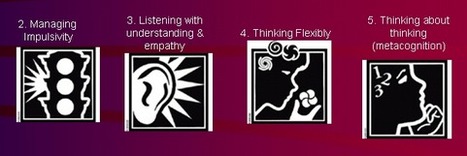"In outcomes-based learning environments, we generally see three elements in play: 1) learning objectives or targets are created from given standards; 2) instruction of some kind is given; and then 3) learning results are assessed. These assessments offer data to inform the revision of further planned instruction. Rinse and repeat.
But lost in this clinical sequence are the Habits of Mind that (often predictably) lead to success or failure in the mastery of given standards. In fact, it is not in the standards or assessments, but rather these personal habits where success or failure — in academic terms — actually begin."
Via Beth Dichter



 Your new post is loading...
Your new post is loading...










Many of us discuss Bloom's taxonomy with students (although we may not refer to it using that terminology) but how many of us talk about Habits of Mind with our students. This post explores how we can use habits of mind to help our students providing suggestions as to how you might help your students learn them.
To see the full poster of the Habits of Mind: http://indysintriguingideas.edublogs.org/files/2010/08/16HabitsofMind1.jpg
Pour une bonne reprise...
I echo Beth Dichter's comments. This is vocabulary we should be using with our students. Identifying habits and ways if thinking that lead to learning.